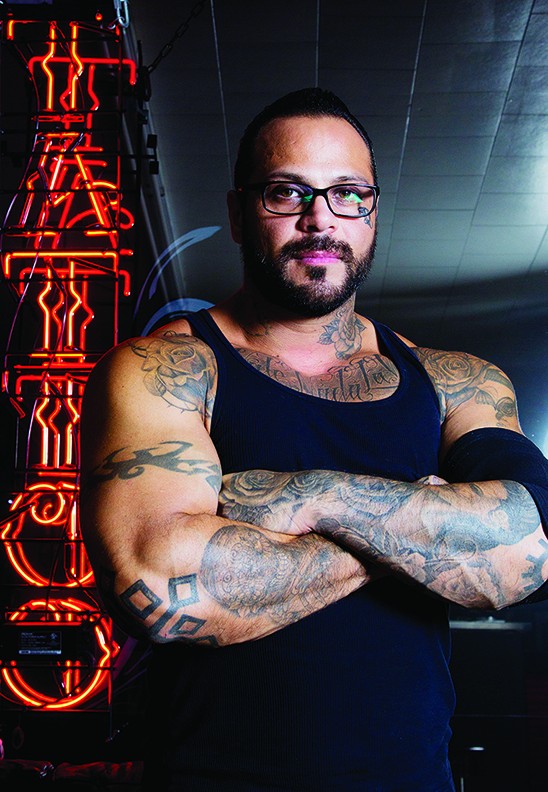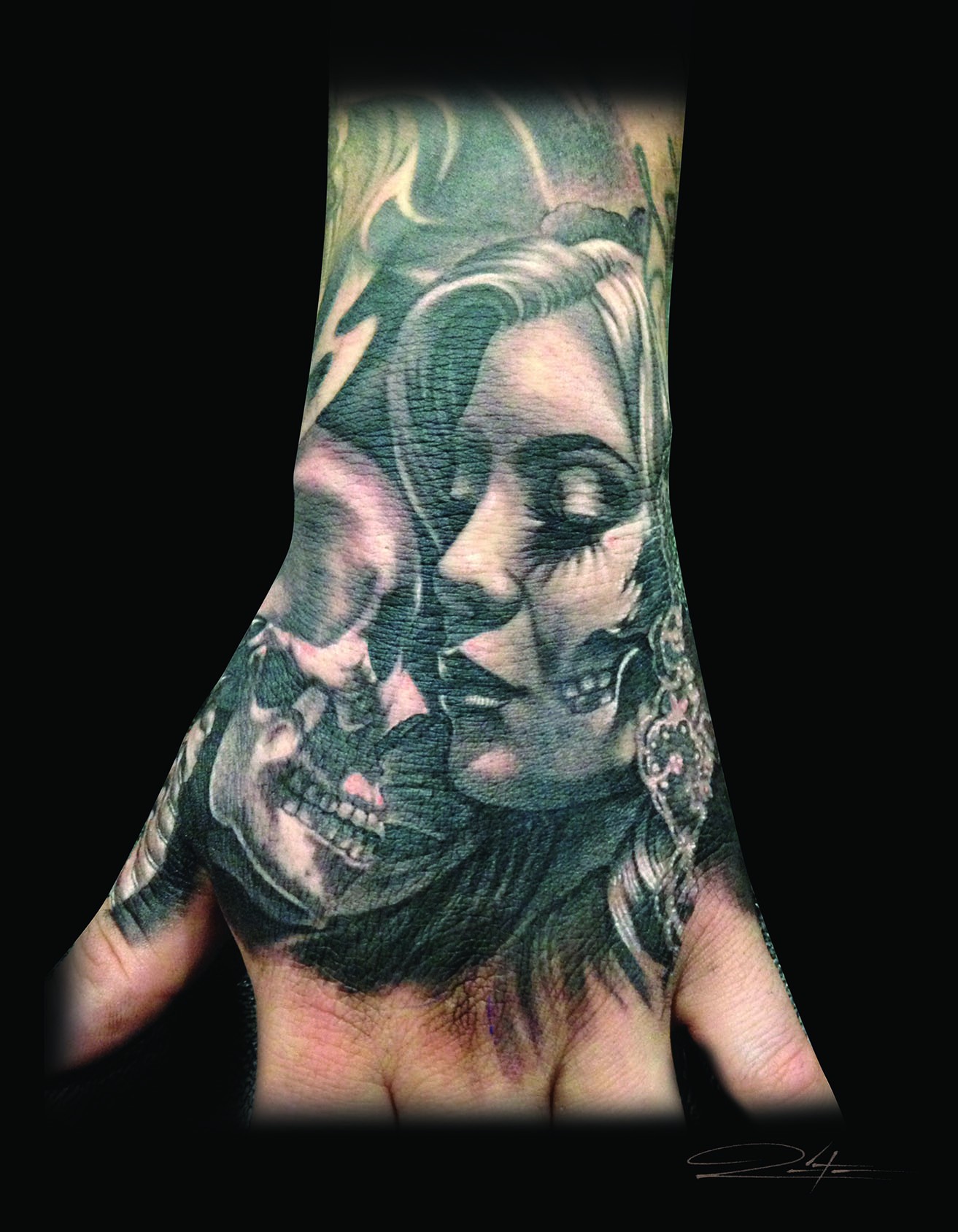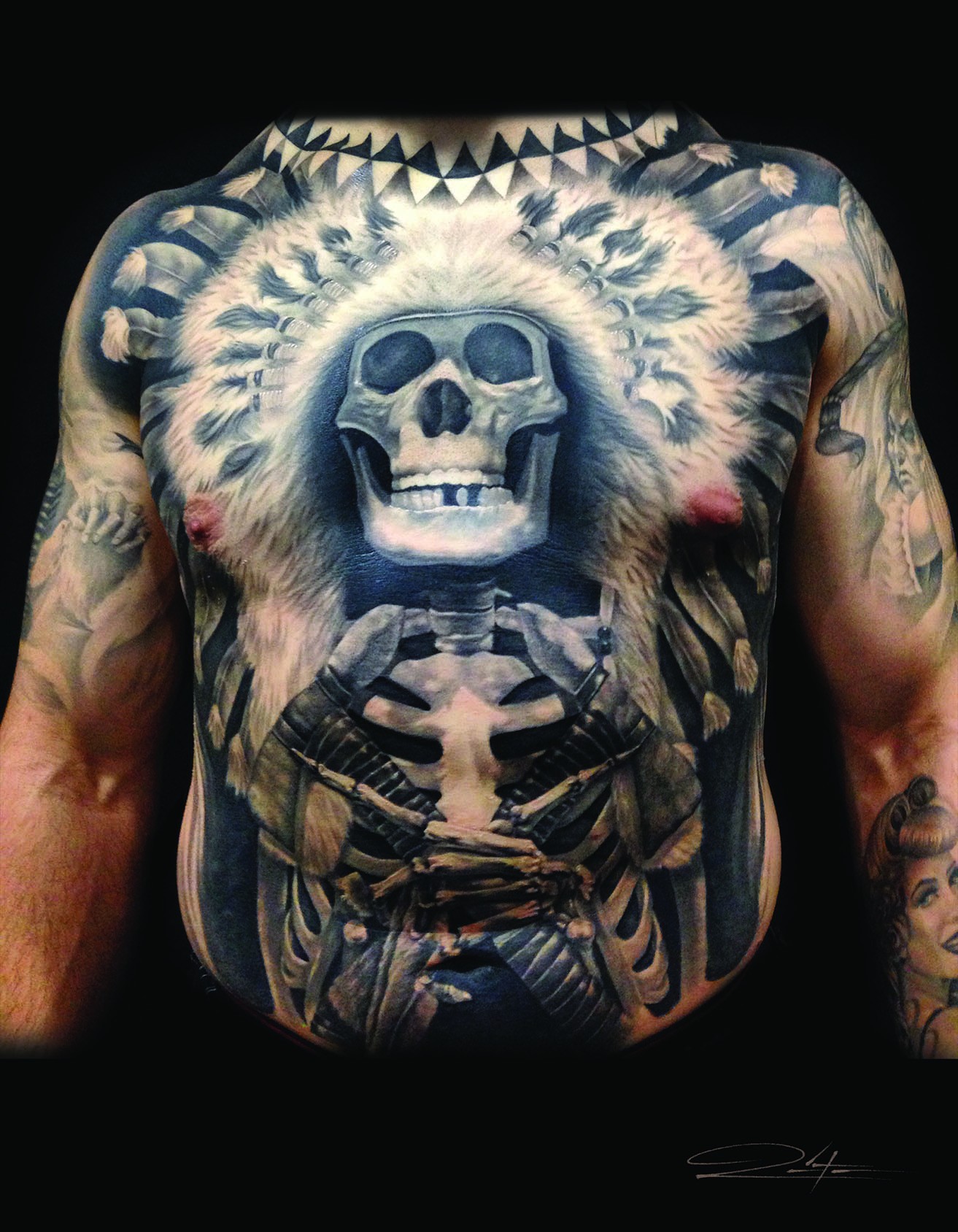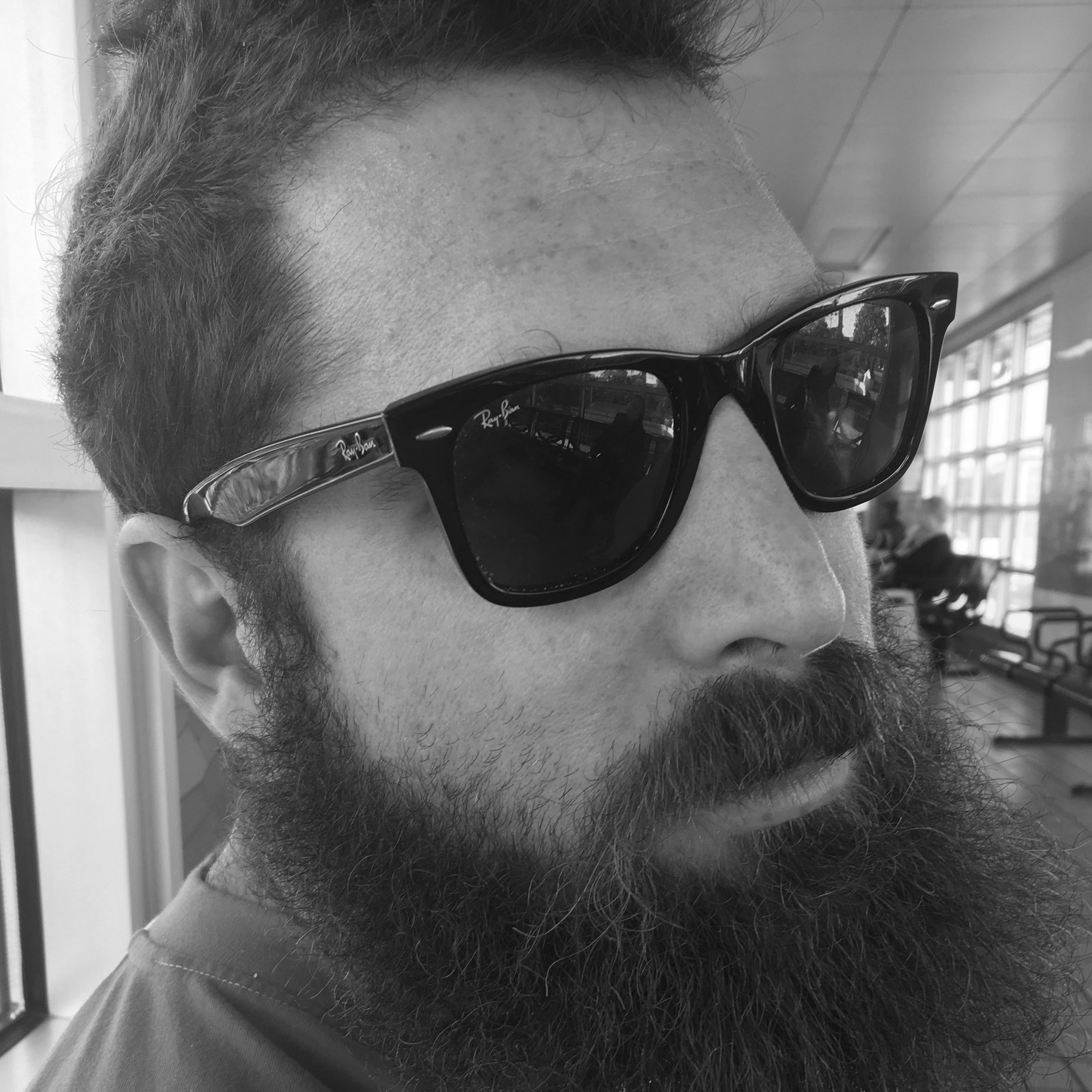 When Johnny Quintana first started filling in as a tattoo artist, many of his peers were still at the age where the most important art they saw was in comic books and cartoons. But as the younger sibling in an artistic Chicano household of the early ‘90s, Quintana had a significant clientele thrust upon him by the time he was a teenager.
When Johnny Quintana first started filling in as a tattoo artist, many of his peers were still at the age where the most important art they saw was in comic books and cartoons. But as the younger sibling in an artistic Chicano household of the early ‘90s, Quintana had a significant clientele thrust upon him by the time he was a teenager.
“When my brother and I were young, he was in and out of jail — and tattooing was kind of a trade you’d learn in there,” Quintana says. “He’d get out and tattoo to make some money, so I got interested in it by watching him. When he would get busted, his friends from the neighborhood would ask me to tattoo them with his machines. I’d draw a lot to try to keep up with him, so by the time I was 11, his friends would trust me to tattoo them with Chicano-style art.”
Even after he worked his way out from the artistic shadow of his older brother, Quintana still spent several more years tattooing the way he was most comfortable — traveling around and making house calls rather than settling down in one specific shop. Eventually though, that nomadic lifestyle grew tiresome and Quintana decided to set roots down. These days, the Arcadia-based tattoo artist finds himself traveling with his art once again — but this time on an international level as one of the finest examples of Chicano-style black and gray tattooing.
 “I’ve traveled out to Europe many times, and they always ask if I know how to do black and gray Chicano-style tattoos,” Quintana says. “It’s like ‘Yeah, that’s all I know how to do!’ It’s so popular now, and there are pros and cons to that. You can be really flattered by it, or you can think it’s like ‘our thing’ and that we should be the ones doing it. It’s reached out all the way to Europe where Italians are doing it, Germans are doing it, but we’re the Chicanos. We’re the real thing over here.”
“I’ve traveled out to Europe many times, and they always ask if I know how to do black and gray Chicano-style tattoos,” Quintana says. “It’s like ‘Yeah, that’s all I know how to do!’ It’s so popular now, and there are pros and cons to that. You can be really flattered by it, or you can think it’s like ‘our thing’ and that we should be the ones doing it. It’s reached out all the way to Europe where Italians are doing it, Germans are doing it, but we’re the Chicanos. We’re the real thing over here.”
But while black and gray tattooing is so closely tied to the Chicano culture of Southern California, Quintana’s artwork and Hispanic heritage go together on an even deeper level. Rather than only ever knowing the barrios of LA, the established artist’s childhood in Mexico give him an extra appreciation for the real Día de los Muertos and the Aztec history that’s not always seen in the famous tattooing style.
“For me, there’s a lot of art that people do and they don’t really know its foundation or what it represents,” Quintana says. “I do a lot of Day of the Dead and Aztec stuff, but when I’m doing it, it’s stuff that I’ve been through as a kid and I celebrated. I’ve done the real Day of the Dead celebration where you’re at the cemetery paying homage to your family members, and it’s like a picnic or party. Out here, it’s been very commercialized and diluted because it’s so oversaturated with people who want to do it but don’t really understand its true meaning.”
 Aside from the watering down of some of his beloved Day of the Dead artwork, Quintana also had to sit back and watch as the tattoo scene shifted into its current commercialized status where apprenticeships and paying dues don’t carry the same weight they did in the ‘90s. Although he may have learned the most outside of a formal apprenticeship, the veteran tattoo artist is far from happy with how many young tattooers get into the industry looking to get rich or act like rock stars. After all, beyond learning the technical aspects of tattooing, the art form’s history is worth learning as well for any young artist who really wants to study it. For instance, a lot of Quintana’s appreciation for the current status of black and gray comes from the uncertainties in the style even less than two decades ago.
Aside from the watering down of some of his beloved Day of the Dead artwork, Quintana also had to sit back and watch as the tattoo scene shifted into its current commercialized status where apprenticeships and paying dues don’t carry the same weight they did in the ‘90s. Although he may have learned the most outside of a formal apprenticeship, the veteran tattoo artist is far from happy with how many young tattooers get into the industry looking to get rich or act like rock stars. After all, beyond learning the technical aspects of tattooing, the art form’s history is worth learning as well for any young artist who really wants to study it. For instance, a lot of Quintana’s appreciation for the current status of black and gray comes from the uncertainties in the style even less than two decades ago.
“There was a point when I was 19 or 20 and I felt like some of the Chicano art wasn’t really accepted,” Quintana says. “People would look down upon it — and even graffiti. I didn’t care because it was what I knew how to do and what I liked doing, so I stuck with it for a while, but I almost stopped doing it because I didn’t think it was what people wanted. I’m happy with where it’s at now, I don’t find it as a surprise.”
Ink Shop Tattoo, 68 W. Live Oak Ave., Arcadia, 626-445-6465, @johnny_quintana

Josh Chesler used to play baseball for some pretty cool teams, but now he just writes about awesome stuff like tattoos, music, MMA and sneakers. He enjoys injuring himself by skateboarding, training for fights, and playing musical instruments in his off time.

